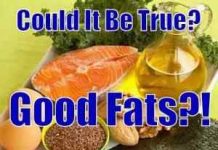What Are Bad Fats And How Do I Avoid Them?
 Saturated and trans fats are notoriously found in grocery stores and restaurants all across the world. Unfortunately, these bad fats can cause severe issues with your health, mental and emotional well being, and, in our case, physical and mental performance.
Saturated and trans fats are notoriously found in grocery stores and restaurants all across the world. Unfortunately, these bad fats can cause severe issues with your health, mental and emotional well being, and, in our case, physical and mental performance.
In this article, we’re going to delve into why saturated and trans fat is bad fats, what foods they are most often found in, and how best to limit our intake of them in favor of good fats daily.
Why Are Trans And Saturated Fats So Bad?
Saturated and trans fat both attack the most vital organs in your body, with a mission objective to cause blockage and harm. To get a good picture of what saturated fat can do, cook a few pieces of bacon and let them sit in the pan until it’s cooled to room temperature. It turns into a solid. And that’s what we put in our body.
Keeping that mental picture in mind, here are a few of the health risks most commonly associated with saturated and trans fat:
- Increased bad cholesterol levels.
- Higher risk of heart disease.
- Increased risk of clogged arteries.
- A decline in physical and mental performance.
For rider nutrition, that equates to a significant decrease in performance on the track and trail – whether it’s training or an actual race. Not to mention, it also impedes our general overall health.
Examples Of Saturated Fats
Saturated fats are mostly found in animal products and vegetables that solidify at room temperature. These include:
- Meat
- Eggs
- Dairy
- Coconut oil
- Palm oil
- Butter
- Cheese
- Ice Cream
Trans fats are naturally found in animal and dairy products. However, the primary concern with trans fat is its artificial derivative, which is found in many of the common prepackaged snack foods we eat:
- Baked goods
- Cookies
- Chips
- Other prepackaged snacks
- Microwave popcorn
- Anything fried
That’s not to say that you can never eat saturated or trans fat. It’s perfectly fine to digest in moderation. The American Heart Associate recommends that between 5-6% of our daily calories come from saturated fats. However, if your daily intake exceeds that amount, you need to adjust your rider nutrition diet accordingly.
Ways To Limit Your Intake Of Saturated And Trans Fats
We’ll end this article (and series) with a few simple and useful ways you can stay on top of the amount of saturated and trans fat you consume daily:
- Eat less red meat, and more fish and chicken.
- When eating meat, go for the leaner cuts and stay away from the fatter options.
- Choose to go low fat when consuming dairy products.
- Use vegetable-based oils instead of butter or lard.
- Avoid cream-based sauces and cheese.
- When shopping, always try to buy fresh. If you do have to buy prepackaged, then make sure you check the labels for fat content.
- Limit how often you eat at fast-food restaurants.
- Avoid fried foods as much as possible.
In Part 4 of the Fitness Fats series, we’ll flip the script and cover the other end of the spectrum – the good fats.
Editor’s Note: This is Part 3 of the Fitness Fats rider nutrition series – a four-part series where we explore the effects of dietary fat on rider performance. Here are links to Part 1 and Part 2 if you missed them.
If you have any questions or anything to add, please leave them in the comments or on our FaceBook page!
Keep Reading – Part 4: What Are Good Fats?




